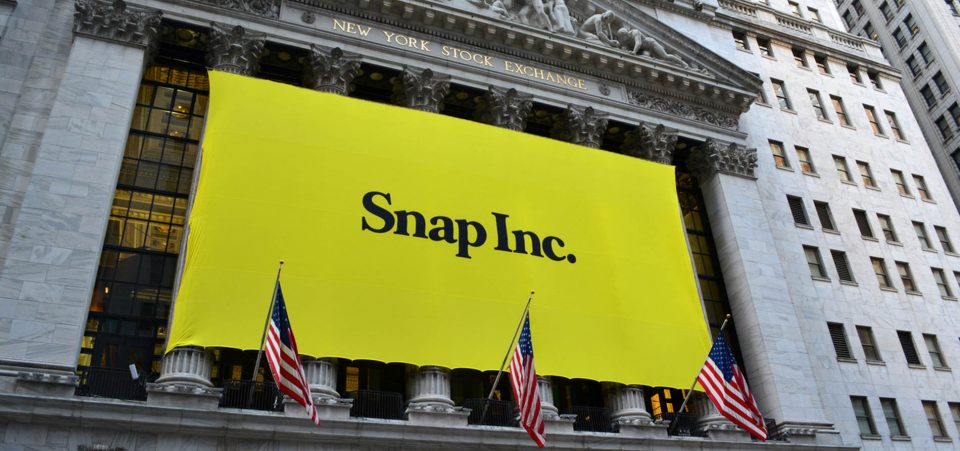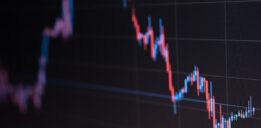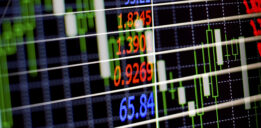Charts Show the Tech Bubble May Burst Soon
One of the most ominous stock market warnings of the 20th century gave investors plenty of time to react. But they didn’t, and the dot com or tech bubble of the 90s burst in the period from 2000 to 2002. The Dow Jones has gained over 2000 points in less than a year, driven by tech stocks. It is it a bubble? Of course it is. Will the tech bubble burst in 2017? Of course it will.
It was none other than legendary—for better or worse—Fed chairman Alan Greenspan who first used the phrase “irrational exuberance” in December of 1996. (Source: “Happy 19th birthday, ‘irrational exuberance’! Greenspan’s famous words,” CNBC, December 5, 2015.) Greenspan worried that asset values had risen so fast that it was impossible to understand if they were reflecting reality or inflating a bubble.
If Greenspan spoke of irrational exuberance then, how would he describe the markets of 2017? Neither “irrational” or “exuberance” would be appropriate. The second tech bubble has much weaker macroeconomic foundations than the first one. From 1995-1999, gross domestic product (GDP) was growing at more than twice the rate of 2012-2016. Federal debt was only 60% of GDP rather than the present 103%, as the chart below shows.
Ominously, just as it celebrated the 10,000 point milestone, The Wall Street Journal warned: “If this is a bubble, it sure is hard to pop.” (Source: “If Market Conditions Are a Bubble, Then It Sure Is Proving Hard to Pop,” The Wall Street Journal, March 30, 1999.)
So let it be written, so let it be done, said a famous prophet. Indeed, it was a prophetic warning. The Dow Jones Industrial continued to rise for the next eight and a half months.
But on January 14, 2000, after testing new heights, it started a rapid “Stuka bomber”-like dive, sending the markets in a downturn that lasted two years. By the time it was done, that dive wiped away some $5.0 trillion of investors’ assets. The Snapchat IPO might be The Wall Street Journal “Dow 10,000” headline of March 1999.
The Snapchat IPO Is the Main Signal That We’re in the Second Tech Bubble
Certainly, the Snapchat—that is, Snap Inc (NASDAQ:SNAP)—IPO must have caused Mr. Greenspan some deja-vu. That was a clear case of both irrationality and exuberance. The markets were alive with the sound of a bursting bubble as Snapchat climbed from $17.00 to $25.00 in minutes.
Snapchat is an all-too-eerie reminder of the 2000 dot com bubble. Eight months before that bubble burst, The Wall Street Journal exalted the Dow, which had just crossed the 10,000 mark. (Source: “US stocks are now the most overpriced since the 2000 crash,” Sovereign Man, January 26, 2017.)
What’s Snapchat’s market cap, you ask? Why, a sensible $30.0 billion. That’s three times as much as Twitter Inc (NASDAQ:TWTR) and 33% more than Fiat Chrysler Automobiles NV(NYSE:FCAU), the world’s 10th-largest automobile company (fourth-largest in Europe). FCA sells cars and trucks worldwide, and profits are rising. Snapchat allows people—mostly teenagers—to exchange pictures and videos that self-destruct minutes after being seen.
Teenagers that like Snapchat are the very same people who will move to the next big thing. Snap’s success might entice a new series of companies like Uber Technologies Inc. or Airbnb, Inc. to launch IPOs in 2017 or 2018. But that might not happen because Snap represents the second tech bubble. After it bursts, investors may finally learn their lesson.
One reason to be worried is that in 2016, the number of IPOs on Wall Street was small. Some suggest it was the worst IPO season of the 20 years. (Source: “Wall Street’s IPO Business: The Worst in 20 Years,” The Wall Street Journal, September 22, 2016.) Thus, the success of Snap or Snapchat might act an exuberant force for market valuations in 2017.
Snapchat’s pre-IPO slogan: “We’re the next Facebook, not the next Twitter” may blow up in its face—just like its users’ pictures and videos do. Snapchat itself warns investors in its S-1 filing: “We have incurred operating losses in the past, expect to incur operating losses in the future, and may never achieve or maintain profitability.” (Source: “Snap Inc.,” U.S. Securities and Exchange Commission, last accessed March 24, 2017.)
Certainly, in light of some of its metrics like user numbers, Snapchat makes for an appealing gamble. It claims that, on average, almost 160 million people a day use the application. It also seems that revenues, in just three years, have moved from zero to over $400.0 million. But “Where’s the beef?” complained a popular commercial of the 1980s.
Snapchat has no profits. Nobody has seen gains, yet Snapchat purports to be the Facebook Inc (NASDAQ:FB) killer. What it does have are losses. They were $373.0 million in 2015 and $515.0 million in 2016. (Source: “2016: Snapchat loses $515m…2017: Snapchat rips veil off $3bn IPO,” The Register, February 3, 2017.) You don’t have to be Warren Buffett to realize this is a situation that cannot be sustained.
Snapchat wants to compete with Facebook, which has a far more universal appeal. That means that Snapchat faces the risk of being crushed by Facebook. The CEO of Facebook, Mark Zuckerberg, had offered $3.0 billion for Snapchat in 2012. Snapchat may be worth more now, but it also risks more.
Irrational Exuberance Is One of the Effects of the Tech Bubble
Even as Greenspan is enjoying retirement from the Fed, there are still voices of reason. In March, Warren Buffett, not one whose opinions should be dismissed in matters of business, cautiously denied the markets are in a bubble. He made the improbable comment after a series of record sessions last February.
That was before the Snap IPO. Since then, the momentum of record high closings for the Dow seems to have slowed. The streak of records is the longest since 1987. That was the same year that markets plunged 22%, losing $500.0 billion in a single session on October 22. The markets recovered in 1987, but the pillars of that economy were stronger than those crumbling under the weight of the current one’s arrears.
Indeed, the Snapchat IPO, and its irrational exuberance will soon reach Mr. Buffett as well. There are many who already entertain doubts that Wall Street has caught an especially string case of the “hyper-valuation” pox. When will the tech bubble burst? A crash seems inevitable in 2017 or 2018. That’s when Trump’s overly deregulated economic policies and overly optimistic tax breaks collide with reality.
That reality has already started in the guise of a more restrictive monetary policy. The first of Fed Chair Janet Yellen’s rate hikes has already come and gone. She announced there would be two more. That could change the game entirely, given the current levels of personal debt plaguing Americans—not to mention U.S. public debt. Yale finance professor and Nobel laureate Robert Shiller certainly thinks the markets are getting out of hand,
Certainly, if other financial gurus have not asked the question: “Is this tech bubble bursting?” yet, Shiller is already worried. The Case-Shiller cyclically-adjusted-price-to-earnings (CAPE) ratio suggests that the S&P 500 has achieved an overvaluation of 75%. By early March, the CAPE ratio reached 30. That’s a number loaded with dire warnings.
A CAPE ratio of 30 suggests that for every $1.00 of earnings a company makes, investors are willing to pay $30.00. Historical analysis using the CAPE tells us that the only other times when the index was hovering around 30 were in 2000 and 2007. Oh, by the way, it was at the 30 level or higher before October 1929. (Source: “Stocks Are Overvalued,” Barron’s, March 6, 2017.)
The first preceded the tech bubble burst and related crash; the second heralded the subprime crash and great recession, the effects of which we still feel today. Not surprisingly, Shiller has warned that the present overvaluation is dangerous and it could be one of the causes of the tech bubble burst.
Watch for the CAPE to hit 45. That’s when you should worry, because that’s the number that preceded the big tech bubble burst of 2000. (Source: “Trump will carry Wall Street to the giddy heights of the 1920s before a fantastic crash, economists warn,” The Telegraph, January 18, 2017.)
Echoes of 1929, 2000, and 2008
Nevertheless, the central problem, related to the CAPE though it might be, is the usual one that few seem to recognize. Those who do like to forget it, sweeping it under the proverbial rug. It’s the ever growing distance between how equity markets perform and what normal people manage to bring home after a hard day of work on Main Street.
It’s an old thing. It happened in 2008 and it happened in 2000 and 1929. What is new is that the potential crash is higher and more damaging than ever. Because the Dow Jones crossed 21,000 last February. More importantly, the Nasdaq, buoyed by the Snapchat IPO, is setting record highs of its own. It hit the ribbon of 21,000 points. And the Nasdaq (the technology list) is flirting with 6,000—a level it hadn’t seen since the days before the dot com burst of 2000.
Meanwhile, while Wall Street is traveling in sixth gear on the interstate, the real economy is stalling and starting in urban traffic. In 2016, U.S. GDP grew by 1.6% and the Eurozone 1.7%. Europe might be growing slower and it has more regulations. But it also has a healthier approach to investing.
In the United States, the idea that rising stock prices indicate the real economy will also benefit has become a sort of celebrated hymn. The markets are rising on the promise of financial freedom that Trump has promised. He wants to repeal Obama’s Dodd-Frank Wall Street Reform and Consumer Protection Act, allowing banks to gamble their clients’ money again.
This has triggered euphoria; indeed, as Snapchat’s IPO has shown, it has triggered what can only be described as “irrational exuberance.” It has inflated the bubble faster than ever. Soon that bubble will burst harder than ever.







